The Wit and Wisdom of Peter Dykstra
Air Date: Week of September 20, 2024
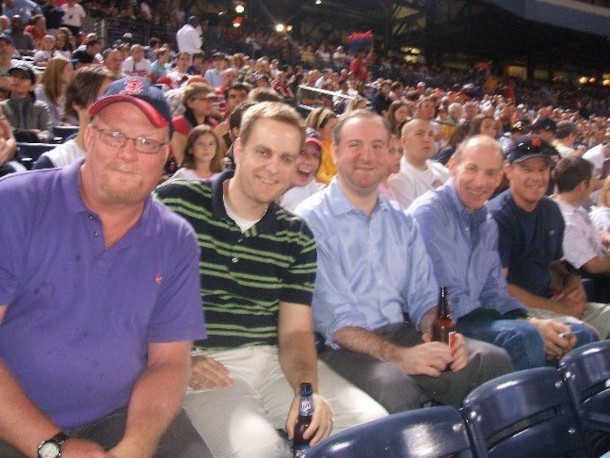
Friends remember Peter fondly as “someone you could have a beer with.” Here he is with several of his former CNN colleagues at a Braves game at Turner Field. (Photo: Steven Springer)
Living on Earth lost our beloved colleague Peter Dykstra this summer. Host Steve Curwood looks back on Peter’s remarkable career in environmental advocacy and then journalism with the help of his former colleagues, the Living on Earth crew and our listeners.
Transcript
CURWOOD: It’s Living on Earth, I’m Steve Curwood.
[MUSIC: Al Stewart, “Time Passages – 2021 Remaster” on Time Passages (Expanded Edition), Warner Music Group]
CURWOOD: So, here’s a riddle for you: what do the Boston Red Sox, the Rainbow Warrior and climate disruption have in common? Two words. Peter Dykstra. And to those two words, you can add brilliant career. Now you may have met Peter on this broadcast over the last decade or so as he did an on-air column for us called Beyond the Headlines. He’d always have a joke, often on the sardonic side, making light of some of the all too often discouraging dispatches from the worlds of environmental policy and science.
DYSKTRA: Nobody knows why, but for some reason in New York City, a study said the sperm counts are not declining like they are in the rest of the Western world.
CURWOOD: What do you think New Yorkers are doing that's different?
DYKSTRA: Bragging? I don't know.
CURWOOD: (laughs)
CURWOOD: But sadly, in this lifetime there will be no more Peter Dykstra jokes. His health was already precarious from a spinal infection that left him paralyzed from the waist down back in 2017, and on July 31st a bout of pneumonia abruptly took his life at age 67.
[MUSIC: Al Stewart, “Time Passages – 2021 Remaster” on Time Passages (Expanded Edition), Warner Music Group]

Despite growing up in New Jersey, Peter was a passionate Boston Red Sox fan, whether he was at Fenway stadium or at the Great Wall of China. (Photo: Courtesy of Steven Springer)
CURWOOD: I first met Peter Dykstra in Washington, D.C. after I had launched the pilots of Living on Earth around Earth Day in April of 1990 and was preparing to go weekly the next year. But he wasn’t an environmental journalist quite yet. In those days he was the media man for Peter Bahouth, executive director of Greenpeace USA. Peter Dykstra met me with a smile on his cherubic face at a reception and with an elegant air of expectation, he steered me to the side of Peter Bahouth for introductions. Of course, it would be important for Living on Earth to cover Greenpeace’s efforts, and the more often the better, he said. Greenpeace stories could be legendary, often with wit and a whip. And there was part of Peter Dykstra who was apparently born to the antics of Greenpeace. Born and raised in Bergen County, New Jersey he managed to get into trouble early, with a journalistic twist. The story he liked to tell is that one day he and a friend played hooky to visit some cemeteries to copy down some names and dates of death on gravestones. They then publicized the names of those dead people they found still on the voter rolls in a publication they circulated at school. But as I understood it from Peter, the school officials were more concerned about him skipping school than uncovering possible voter fraud. “Seeking justice will get you in trouble Steve, you know that” Dykstra then headed north to college at Boston University, where he became a diehard Boston Red Sox fan, a contrarian to his New York Yankee-loving peers back home. And with the same passion for justice, he volunteered with Greenpeace and its campaigns against nuclear bomb testing and whaling with the Rainbow Warrior protest ships. After college Greenpeace USA hired him in Washington DC as media director.
Bill Kovarik, a local newspaper man in South Carolina recalls that Peter once called to convince him to cover the arrival of the Rainbow Warrior during a tour. Despite his conservative editor's misgivings, Kovarik was persuaded to ask an intern to cover the story. He says Peter’s media-savvy tactics were impressive.
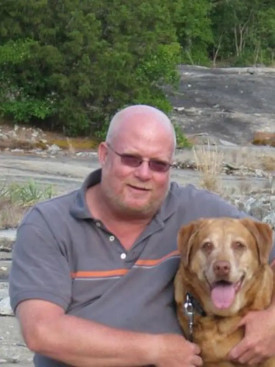
Peter always appreciated animals, from the wildlife he fought to protect to the four-legged friends in his own life. (Photo: Courtesy of the Dykstra family)
KOVARIK: What Greenpeace did, and what Peter really refined was this idea of getting people involved in the environmental movement. Here's something that you can do if you've got a toxic waste dump going right into your river where kids are swimming. You could just put an inflatable raft up the pipe and pull the cord and open it up, and it would clog the pipe, and then you would say, this is a Greenpeace action, and it's being done because it's wrong to dump that much toxic waste in the river. So, it wasn't just that people protested, you know, it was that the protests, although nonviolent, involved action, it was part of the formula for success.
CURWOOD: And part of Peter’s talent involved keeping things light.
KOVARIK: He never lost his cool. He was always funny, and he kept his eyes on the horizon. He knew where he was going. He knew where things should go. So, he had the strategy and the tactics, and he did a great job at it, but he did it with kind of a verve and a sense of humor that helped put people at ease, helped get them on board.
CURWOOD: During the Reagan Administration in the 1980’s James Watt, Secretary of the Interior, wanted no holds barred when it came to extracting fossil fuels. He dismissed environmentalists as being for "preservation vs. people" and said he saw politics as a clash between "liberals and Americans." Peter Bahouth says Greenpeace pushed back with Dykstra’s wit front and center.

Before becoming a journalist, Dykstra worked for Greenpeace, where his media savviness shined. (Photo: Salvatore Barbera, Wikimedia Commons, CC BY-SA 2.0)
BAHOUTH: So he went to a hardware store, got big buckets and filled them with, I think it was 5000 marbles, and brought them to the Interior Department. And when he was stopped at security, he said, they said, you have an appointment. He goes, no, but we're returning James Watts marbles. And they said, well, you know, you know, you don't have an appointment and you're going to have to leave. And Peter said, well, the marbles are his, but the buckets are ours. And he just dumped all of the marbles on the floor of the lobby of the Interior Department, which made an incredible noise, where they just bounced all over the place.
[MUSIC: Al Stewart, “Time Passages – 2021 Remaster” on Time Passages (Expanded Edition), Warner Music Group]
CURWOOD: Going back to when Peter Dykstra was promising to pitch stories to Living on Earth for Greenpeace, well, it never happened. A short time later both Peter Dykstra and Peter Bahouth were gone from Greenpeace and into the orbit of Ted Turner , founder of CNN, and his environmental media master, Barbara Pyle. Ted Turner and Barbara Pyle wanted to make CNN into THE source of environmental news and information. So, they created the TV series Captain Planet for young folks, tasked Peter Bahouth with giving away money for environmental media through the Turner Foundation and launched Peter Dykstra into an environmental journalism career at CNN. (And if you are wondering, the Turner Foundation at one time also contributed to Living on Earth, with no strings attached.) Once at CNN Dykstra quickly advanced to the top position responsible for environmental coverage at the network, where among other things he battled the forces of climate denial within and without the organization.
That was where Steven Springer, who worked at CNN as an editor and field producer met Dykstra and immediately liked him.
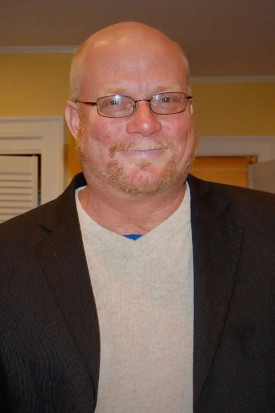
Peter Dykstra died of pneumonia on July 31, 2024, at age 67. (Photo: Courtesy of the Dykstra family)
SPRINGER: So I would say, if anyone was meeting Peter for the first time, it would be, you're going to laugh, you're going to get into debate, but you're going to walk away loving the guy.
CURWOOD: While at CNN, Dykstra jointly won multiple awards, including an Emmy and a Peabody. But even as he climbed the journalism career ladder, he never lost touch with the people around him. He joined the Society of Environmental Journalists, went on its board, chaired a conference, and met the Toledo Blade’s environment reporter Tom Henry.
HENRY: He made you feel like, you're able to be friends with somebody in a very important position, like when he was at CNN, as the guy running the science tech environment unit, you know, one of the more important producers in the country, but you know, you felt like he was just someone who, you know, you'd go have a beer with.
CURWOOD: And if you had a beer with Peter Dykstra…
HENRY: He always liked getting in his little digs about the Yankees. You know, one of his favorite phrases would be, you know, such and such isn't, isn't a bad person, even for being a Yankee fan.
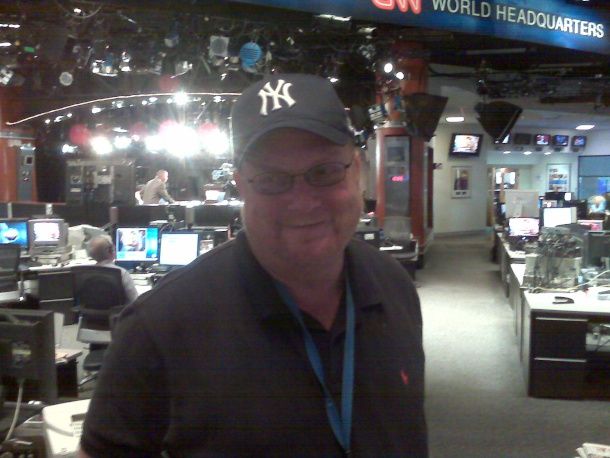
Peter Dykstra transitioned from environmental activist to environmental journalist when he took a job at CNN. Here he is wearing a Yankee’s cap in the CNN headquarters as a joke between himself and Steven Springer. (Photo: Courtesy of Steven Springer)
CURWOOD: By 2008 the corporate maneuverings and mergers of CNN collided with a major recession, and virtually the entire staff of Barbara Pyle and Ted Turner’s beloved environmental, science and tech unit, including Peter Dykstra was shown the door.
Peter became the publisher of Environmental Health News and about a decade ago he also joined the Living on Earth team as a resident raconteur telling the stories of Beyond the Headlines. He knew the quirks of each media form and used them to his advantage:
DYKSTRA: Well, I don't want to bring the FCC down on you for indelicate language, but let's just say that cows have tailpipes too.
CURWOOD: From his very first recording session, he brought his signature snark to the studio. Here’s his comment about New Jersey governor Thomas Kean, who issued a warning about climate change way back in 1989:
DYKSTRA: He may be eligible for what I like to call the Nobel prize in “I told you so”.
CURWOOD: Once Peter wound up in a wheelchair in 2017, he scaled back his work with EHN but continued at Living on Earth until less than three weeks before his death.
At the risk of being self-indulgent, our team wants to share our experiences with Dykstra as a colleague and friend, starting with Aynsley O’Neill who shared New Jersey origins with Peter.
O’NEILL: I think Peter had a way of making everyone feel like they had a particular camaraderie with him. You know, I felt like he and I had a special dynamic, but I also know many of his colleagues felt exactly the same. Peter and I bonded over everything from those shared New Jersey roots, to our latest and greatest movie recommendations, and of course, our love-hate relationship with commercial jingles.
But perhaps most memorably for me, Peter was always ready to help me workshop a joke. And privately, I’ve often suspected that in our conversations, he would give me the better opportunities to make a pun or one liner. I’ll always be grateful to Peter for that.
And I’ll always remember him fondly, when I’m listening to the Temptations, watching Godzilla vs. Smoke Monster, or driving through our Bergen County hometowns.
PANDELIDIS: I was most struck by Peter’s unconditional respect for me, as a new, very inexperienced intern. And I saw this again and again, with every new crop of interns I would train. And I know that many of them noticed that incredible quality in Peter, and it’s one I think every leader should have.
ALLING: I only knew Peter Dykstra in a limited capacity for a brief period of time, but it was enough to make me mourn his loss. I helped produce some of LoE's Beyond the Headlines segments, which Dykstra pitched and recorded. I'd vet his proposed stories and ensure his recorded statements were factual. Telling a veteran reporter he was wrong was intimidating, but Dykstra made it clear when we first met that I could call out his blunders freely. He was unafraid to give or receive feedback. He was honest, whether he was talking about his day or the latest electoral news. He was also kind enough to include me in conversation and treat me, an inexperienced intern, as a professional equal. I'm glad I got to know him, even if only for a little while. Thank you, Peter.
DOERING: Peter had a way of mixing the serious with the absurd to break through the grim prospects of the climate crisis. Like, from time to time he'd proudly bring up his date with Jim Inhofe, the climate-denying Senator from Oklahoma who once brought a snowball to the Senate floor as "proof" that climate change was a myth. Peter got a commitment from Inhofe a few years ago to interview the Senator on his 100th birthday, which would be Friday, November 17, 2034, at ten a.m. to be exact. Senator Inhofe also passed away this July, just weeks before Peter. Often, when I'd chat with Peter he'd end our conversation with a "Bye bye, Jenny," a nod to Forrest Gump. Bye bye, Peter. You may be gone but what you gave to us will never be forgotten.

Senator James Inhofe opposed many environmental protection measures during his career. Peter Dykstra agreed to interview Inhofe on Inhofe’s 100th birthday in 2034 to see who was right about the climate crisis. Both died in July. (Photo: Gage Skidmore, Flickr, CC BY-SA 2.0)
CURWOOD: That was Jenni Doering and before her you heard Fern Alling, Sophia Pandelidis, and Aynsley O’Neill.
[MUSIC: Al Stewart, “Time Passages – 2021 Remaster” on Time Passages (Expanded Edition), Warner Music Group]
CURWOOD: We’re certainly not alone in missing Peter. You our listeners have written in as well. Billy and Beth Cardina sent this note:
“Peter Dykstra will be missed BIG TIME! The stories and his entire On-Air presentations were awesome. We all have benefitted from his dedication and insights. He made the world a little better. Peter was a natural. God Bless Peter and his family.”
Alex Hemmerstein wrote,
“I was shocked and saddened to hear of Peter’s passing. I had just been thinking about how much I love his segments and how much I look forward to his next piece of work.
His loss shows how precious life is - something Peter clearly understood to his core.
I guess I will have to carry-on his curiosity, passion for living things, and his amiable spirit in my own life.”
Richard Feldman told us,
“My Saturday morning routine is to listen to the broadcast of LOE 6-7am on my local NPR station, as I put away dishes and prepare and enjoy coffee. Although I may wander in and out of the kitchen, I am sure to listen attentively once Peter is welcomed from Atlanta to share his latest installment of environmental history. I will sorely miss his knowledge, gentle humor and endearing voice.”
And many of Peter Dykstra’s colleagues and peers in the industry have paid him tribute. We leave you now with an excerpt from one such remembrance, written and read by Brian Bienkowski, the senior news editor at Environmental Health News.
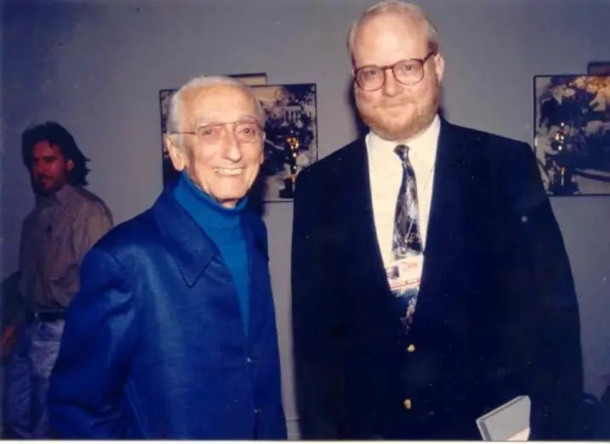
Through his work at CNN, Dykstra met some environmental giants, including filmmaker Jacques Cousteau. (Photo: Courtesy of the Dykstra family)
BIENKOWSKI: In recent years, I’d sometimes go months without hearing from him, but then I’d see him light up my phone, one of the last people I know that would leave lengthy, detailed voicemails including his name and what time he called. Like clockwork, I’d hear from him in February when he’d be excited about Georgia Tech baseball starting up. He’d ask me how much snow I was dealing with here in the North, and brag that he was gearing up for opening day. I didn’t think I’d be writing a note about my friend’s passing today. I already find myself wondering what Peter would have said about the latest election nonsense and the baseball trades that happened this week. The world was a better place with Peter’s voice in it. He spent a career on the most serious of topics — the health of our planet — and never he let it break him. He went from a volunteer to a newsroom leader, but never lost the ability to poke fun at himself and treated esteemed veteran reporters the same as student interns. Just two weeks Peter passed he gave me a call about a column he was working on. Before he let me go, we talked about the latest player the Detroit Tigers were sending down to their minor league team in Toledo, which also happens to be downstream of Detroit, a city notorious for its sewage overflows. “It’s just the latest crap Detroit is sending down to Toledo,” he said.
An environmental reference wrapped in a baseball joke . or is it the other way around?
“You can use that one if you want,” he added, and then we hung up.
[MUSIC: Al Stewart, “Time Passages – 2021 Remaster” on Time Passages (Expanded Edition), Warner Music Group]
CURWOOD: And so farewell, beloved friend and colleague Peter Dykstra. Thanks for all the love and laughs you've shared over these years.
Links
Read Brian Bienkowski’s full memorial for Peter Dykstra
Read former LOE producer Bobby Bascomb's tribute to Peter Dykstra
Living on Earth wants to hear from you!
Living on Earth
62 Calef Highway, Suite 212
Lee, NH 03861
Telephone: 617-287-4121
E-mail: comments@loe.org
Newsletter [Click here]
Donate to Living on Earth!
Living on Earth is an independent media program and relies entirely on contributions from listeners and institutions supporting public service. Please donate now to preserve an independent environmental voice.
NewsletterLiving on Earth offers a weekly delivery of the show's rundown to your mailbox. Sign up for our newsletter today!
 Sailors For The Sea: Be the change you want to sea.
Sailors For The Sea: Be the change you want to sea.
 The Grantham Foundation for the Protection of the Environment: Committed to protecting and improving the health of the global environment.
The Grantham Foundation for the Protection of the Environment: Committed to protecting and improving the health of the global environment.
 Contribute to Living on Earth and receive, as our gift to you, an archival print of one of Mark Seth Lender's extraordinary wildlife photographs. Follow the link to see Mark's current collection of photographs.
Contribute to Living on Earth and receive, as our gift to you, an archival print of one of Mark Seth Lender's extraordinary wildlife photographs. Follow the link to see Mark's current collection of photographs.
 Buy a signed copy of Mark Seth Lender's book Smeagull the Seagull & support Living on Earth
Buy a signed copy of Mark Seth Lender's book Smeagull the Seagull & support Living on Earth

